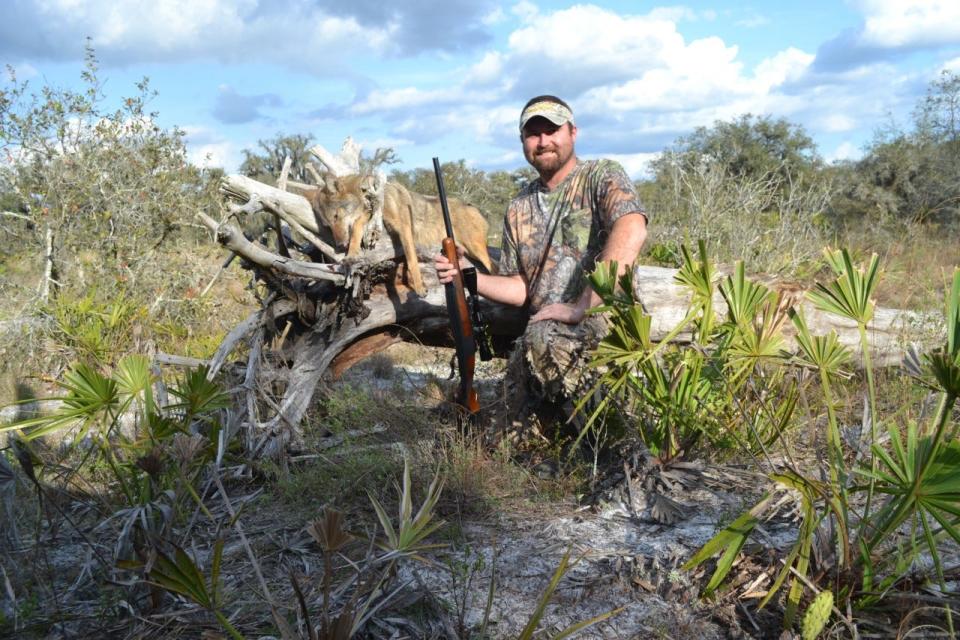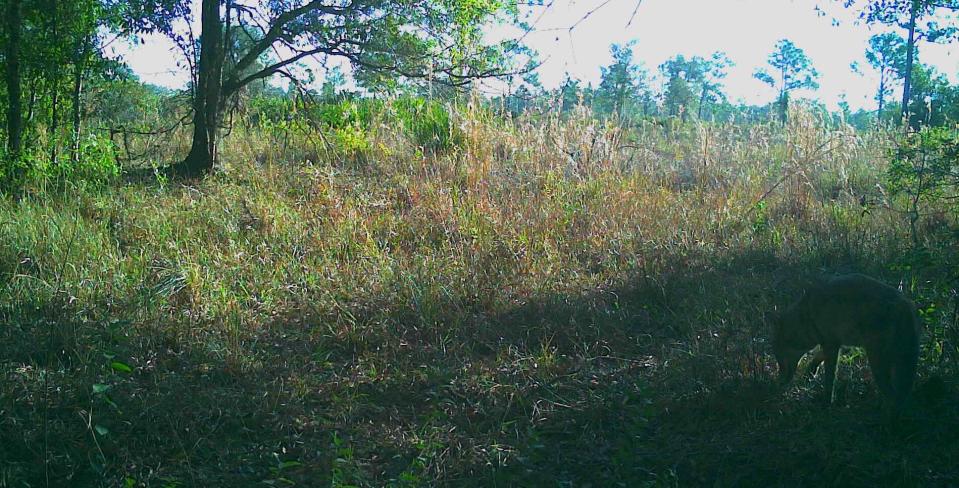NANCE: There's little to be done in the long run for controlling coyotes

Martha Stewart and I have virtually nothing in common other than we have coyotes running around our homes. Well, guess I might too be labeled a lifestyle guru if you’re into hunting, Crocs, and Evan Williams, but I digress.
Unfortunately, rotten news broke earlier in the week when Ms. Stewart took to her Instagram account to mourn the loss of six pet peacocks to ravenous coyotes at her Connecticut farmstead, including one bird she’d named “BlueBoy.”
"The coyotes came in broad daylight and devoured him and five others including the magnificent White Boy," she posted on July 23.
Bowhunting prep:Make sure equipment is ready as bowhunting season nears
Bear hunting:Bear hunting is poorly understood in Florida
Bay scallops:Researchers provide some insight into the ol' bay scallop
This timing is personally striking as over the last month, numerous people have reported coyote sightings around the South Lake Morton Historic District in Lakeland where I call home. A few have reportedly come across partially devoured ducks, as well.
Of course, this is nothing profoundly new to this area. In 2014, mutilated cats led residents to believe a psychopath was on the prowl until the evidence piled up and pointed towards coyotes — which, by the way, the Southern Gentleman pronunciation is "Kai-Yotes" never "Kai-Yotees" unless you also put the "O" in front of "possum" in which case I can help you no further.
Anyway, LPD officers killed an injured coyote in 2015, and another was spotted in 2017 near the LPD station that boogered folks as it wandered around in broad daylight.
So yes, coyotes are in downtown Lakeland and likely here to stay. Ms. Stewart solicited ideas from her followers for creative solutions to her coyote problem. As a DIY maven, there is one obvious thought that occurred to every sportsman, woman, and child who read this story that she should’ve picked up on that I know a few people have contemplated in my neck of the woods. And while my ego would revel in my neighbors turning to me like the citizens of Amity Island recruiting Quint to solve their little wildlife dilemma, I am forced to admit my methods would be harsh in this suburban environment and probably pointless in the long run.
Without a doubt, coyotes are among the toughest critters to pursue. There’s an old saying among hunters that if a wild turkey, whose eyesight and hearing are exceptional, could smell, they’d be unkillable. Toss in that canine intelligence, and that describes a coyote.

Of course, this is hyperbole. Still, the most successful coyote hunters resort to advanced tactics, hunting at night with thermal or night vision scopes on tricked-out AR-15s. They use predator callers that imitate the sounds of various injured prey animals such as rabbits or mice. Listening to a digital wounded cottontail scream for more than five minutes at a time will make a man demented, I assure you, but the coyotes will often bounce into fields and clearings to these calls seeking an easy meal under the cover of darkness.
As you might imagine, that whole scenario is a no-go in the ol’ hood.
A generation ago, coyotes weren't an issue east of the Mississippi. They were once considered solely a Western species, but the extirpation of wolves and panthers in the east prompted their expansion towards the Atlantic, arriving in Florida in the 1970s. And, we’ve learned a lot about these coyotes in recent years. They have proven themselves rather pioneering and extremely adaptable, thriving in all manner of landscapes and feeding on everything from bird seed and watermelons to sea turtle eggs and small dogs.
Coyotes are also complicated animals, in my esteem. While hunters generally hunt them as part of a deer management plan, new studies are showing there may be a net benefit in having coyotes for ground-nesting birds such as wild turkey. Sure, coyotes will attack and eat turkeys and their eggs given a chance, but they also control possums and raccoons which are far superior at destroying nests. In addition, their cravings for feral felines only does the song bird population favors.

Beyond that, coyotes abhor a vacuum. According to FWC, removing some from one area can result in others establishing themselves and producing more pups per litter, effectively worsening a local situation. Other studies are showing how these animals are excelling in an urban or suburban context, adapting quite well to civilization and the ample supply of manmade forage in the form of trash and unleashed pets, among other tasty treats.
So, not be a defeatist, but there’s little to be done in the long run for controlling coyotes either here or in Connecticut. Trapping or shooting those running around downtown Lakeland is a temporary solution, though a potentially satisfying salve on a vengeance level if Fluffy went missing.
The important thing is just to be smart about living around them. Secure trash, keep small pets inside and on a short leash when going for walks, and for heaven’s sake, don’t ever feed these animals. Adult coyotes aren’t but 20-30 pounds and easily frightened under normal conditions. This fear abandons them once conditioned to humans and hand-outs.
And, if you do see one acting abnormally around town, contact the Southwest Regional FWC office at 863-648-3200.
This article originally appeared on The Ledger: NANCE: There's little to be done in the long run for controlling coyotes

